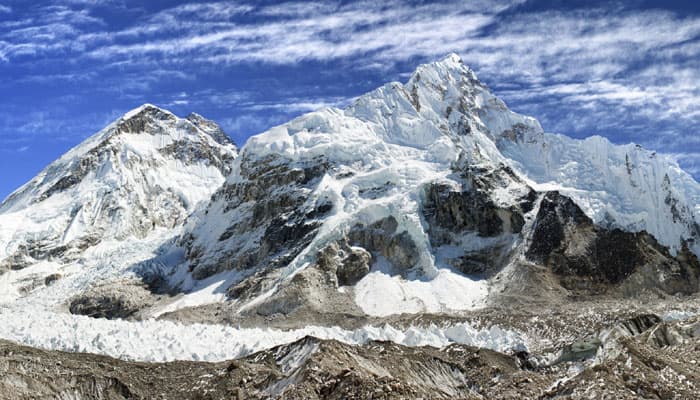
In the massive Himalayas, a remarkable phenomenon has emerged that may help to mitigate the effects of the global climate problem. According to scientists, when high temperatures come into contact with high-altitude ice masses, ‘katabatic’ winds are created, blowing cold air to lower-altitude places. The research, published in the journal Nature Geoscience, used data from the Pyramid International Laboratory/Observatory climate station on Mount Everest, the world’s highest peak.
According to Francesca Pellicciotti, professor of glaciology at the Institute of Science and Technology Austria and the study’s primary author, a temperature difference exists between the air travelling above the mountains and the cooler air directly in touch with ice masses. “This leads to an increase in turbulent heat exchange at the glacier’s surface and stronger cooling of the surface air mass,” she went on to say. As the warm air cools and becomes denser, it sinks, causing katabatic winds to blow in neighbouring places down the slope. While this phenomenon may mitigate the consequences of global warming in some locations, its long-term viability is uncertain.
Scientists noticed that this phenomenon does not halt glacier melting caused by climate change
However, understanding the impact of this occurrence is critical since the Himalayan mountain range feeds 12 rivers that supply fresh water to over 2 billion people in 16 countries. Scientists noticed that this phenomenon does not halt glacier melting caused by climate change. According to a June analysis previously covered by CNN, glaciers in the Himalayas melted 66% quicker in the 2010s than in the previous decade, a trend that is unlikely to alter.
“The main impact of rising temperature on glaciers is an increase of ice losses, due to melt increase,” said Fanny Brun, a research scientist at the Institut des Géosciences de l’Environnement in Grenoble, France. She was not involved in the study. Thomas Shaw, who is part of the ISTA research group with Pellicciotti, said there are various complexities involved behind the reasons for ice melting. “The cooling is local, but perhaps still not sufficient to overcome the larger impact of climatic warming and fully preserve the glaciers,” Shaw observes.
